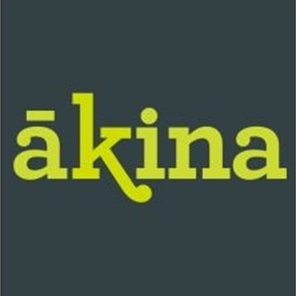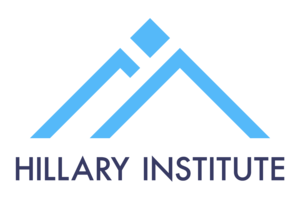Fonterra Announces New Incentives For Farmers To Reduce Emissions
Fonterra has today announced new funding designed to build a stronger Co-operative and continue to grow value for its shareholders through helping farmers reduce on-farm emissions.
For the 2025/26 season beginning on 1 June, Fonterra will introduce a payment for farms that achieve certain emissions-related criteria as part of updates to its Co-operative Difference framework.
Meanwhile, new incentives that benefit farmers will be funded through separate agreements with Mars and Nestlé, who have been working with Fonterra to make progress towards their individual sustainability goals by supporting farmers to reduce emissions.
Fonterra CEO Miles Hurrell says the new incentives demonstrate Fonterra’s strategy in action.
“We’re growing relationships with customers who value the hard work farmers put into producing sustainable, high-quality milk, along with the Co-op’s quality of on-farm data and ongoing commitment to improvement. This helps us make progress towards achieving our on-farm emissions target and deliver the highest returns for our farmer shareholders’ milk.
“Last year we confirmed six strategic choices that we believe will help grow further value in the years ahead and this is an example of how we’re delivering on two of those choices, deliver the strongest farmer offering and build on our sustainability position,” says Mr Hurrell.
The new funding, includes:
New Co-operative Difference payment
- 1-5 cent per kgMS payment: To date, a total of up to 10 cents per kilogram of milk solids (kgMS) has been possible across all achievements within Fonterra’s Co-operative Difference framework. A new Emissions Excellence achievement will offer a further payment of between 1-5 cents per kgMS for farms that meet certain criteria*. Based on last season’s data, it’s estimated that approximately 5,000 farms will be eligible for this payment next season.
New customer incentives
Funding from separate agreements with Mars and Nestlé, will be split between:
- On-farm solutions: Farmers who achieve the Co-operative Difference will be eligible for access to on-farm tools or services designed to further improve emissions efficiency, for example herd efficiency services from LIC and CRV. Based on last season’s achievements, 87% of farmers would’ve been eligible.
- Extra 10-25 cents per kgMS Emissions Incentive payment: Farmers who achieve the Co-operative Difference and have one of the lowest emissions footprints in the Co-op** will receive an Emissions Incentive payment of between 10-25 cents per kgMS. Based on last season’s data it’s estimated that between 300-350 farms will be eligible for this payment next season.
Mars Snacking Chief R&D, Procurement and Sustainability Officer, Amanda Davies says between new equipment and technology, embracing more sustainable practices comes with a price tag for farmers.
“That’s why we’re working with partners like Fonterra to help remove this barrier – providing cash, tools, and technology to support farmers in making meaningful, long-term changes.”
Nestlé New Zealand CEO, Jennifer Chappell, says Nestlé globally is a significant purchaser of New Zealand dairy ingredients, and dairy remains its largest source of greenhouse gas emissions.
“As we strive towards achieving net zero emissions by 2050, we are committed to reducing our Scope 3 emissions. We will continue to support farmers, in partnership with Fonterra, fostering new economic opportunities and helping them lower their greenhouse gas emissions.”
Mars and Nestlé have independently supported Fonterra farmers with their sustainability actions through initiatives introduced over the past couple of seasons.
In 2024, Fonterra farmers were invited to take part in the Mars Tools and Services pilot, which provided access to tools and services, including animal efficiency services and digital tools. Additionally, Mars previously supported the Greener Choices programme, which made it easier for Fonterra farmers to identify and buy products at Farm Source stores that could help them make sustainability improvements on-farm.
In 2022, Fonterra and Nestlé announced a partnership that included the Net Zero Pilot Dairy Farm in Taranaki, designed to help reduce on-farm emissions. In 2023, Fonterra announced that Nestlé would make an additional payment of between 1-2 cents per kgMS for farms that achieved any level of the Co-operative Difference. This payment has been replaced with the new Emissions Incentive payment from next season.
Notes:
*New Co-operative Difference payment
To meet the new Emissions Excellence achievement, farmers need to achieve the Co-operative Difference and their emissions from farming activities (like feed, fertiliser and herd) minus any carbon removals (i.e. emissions reductions resulting from the carbon dioxide that is removed from trees and vegetation that is grown on-farm) need to be lower than the Co-op’s 2017/18 baseline year.
**Extra 10-25 cents per kgMS Emissions Incentive payment
To receive the customer-funded Emissions Incentive payment, farmers need to achieve the Co-operative Difference and have one of the lowest emissions footprints in the Co-op (around 30% lower than the average farm). This will take into account not only emissions from farming activities, but also those associated with land use change (e.g. the historical conversion of forests to pasture) and those released from peat soils, before subtracting any carbon removals.
Fonterra’s Climate Roadmap
Fonterra has a target of reducing on-farm emissions intensity by 30% by 2030 from a 2018 baseline. The target was announced in 2023 as part of its Climate Roadmap, which outlines the Co-op’s 2030 targets and ambition to be net zero by 2050. This target is critical for a number of reasons. It helps the Co-op to remain competitive and build stronger partnerships with customers as well as be able to secure future funding, meet market access demands and comply with increased legal and reporting obligations, as the Co-op plays its part in taking action on climate change.
Sustainability at Mars
As part of Mars'Net Zero Roadmap, the company has built a plan to halve full value chain emissions by 2030*, enroute to Net Zero by 2050. Mars is already delivering on its promises with16% absolute reductions in GHG emissions in 2023against a 2015 baseline, across its full value chain.
In 2024, Mars launched its Moo’ving Dairy Forward plan, a $47M 3-year investment in new technologies and partnerships to slash greenhouse gas (GHG) emissions across its global dairy supply chain.
*As measured against a 2015 baseline.
Sustainability at Nestlé
Nestlé is striving towards net zero emissions by 2050. In 2020, they published the global Nestlé Net Zero Roadmap and have since transformed their business to start delivering reductions in greenhouse gas emissions across all three Scopes of their activities. By the end of 2025, Nestlé aims to reduce emissions by 20% and by the end of 2030, by 50%.
Progress toward net zero will be measured against Nestlé’s 2018 GHG emissions. Targets were set by following the Science Based Targets initiative’s (SBTi) criteria, providing a clear pathway for future-proof growth with reductions in GHG emissions. Nestlé’s Scope 3 emissions make up 95% of their footprint, and they are addressing more than 80% of these. The SBTi approved Nestlé’s targets in November 2020. Read more here: https://www.nestle.com/sustainability


 RotoruaNZ: RotoruaNZ And Air China Form Partnership To Strengthen Tourism
RotoruaNZ: RotoruaNZ And Air China Form Partnership To Strengthen Tourism Westpac: Shifting To A Sustainable Marine Economy Could Contribute $14bn By 2035
Westpac: Shifting To A Sustainable Marine Economy Could Contribute $14bn By 2035 Mindful Money: KiwiSaver Investments Fuelling The Climate Crisis - New Research Reveals A Surge In Fossil Fuel Investments
Mindful Money: KiwiSaver Investments Fuelling The Climate Crisis - New Research Reveals A Surge In Fossil Fuel Investments Stats NZ: Visitor Arrivals Up In 2024
Stats NZ: Visitor Arrivals Up In 2024 Hospitality NZ: Hospitality NZ Welcomes Government’s Australian Tourism Campaign
Hospitality NZ: Hospitality NZ Welcomes Government’s Australian Tourism Campaign Bill Bennett: Download Weekly - Faster Fibre And NZ's First Private 5G Network
Bill Bennett: Download Weekly - Faster Fibre And NZ's First Private 5G Network



